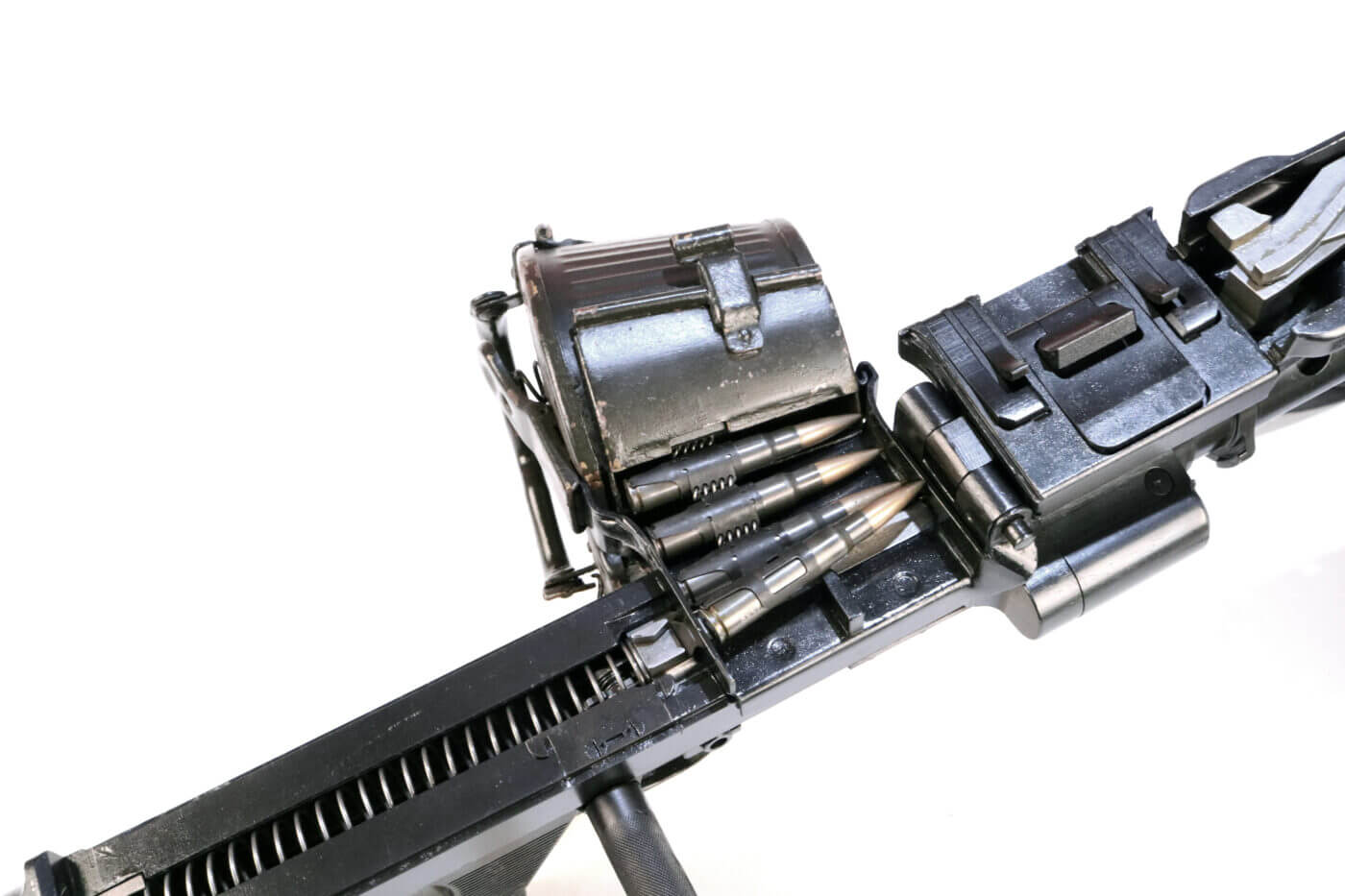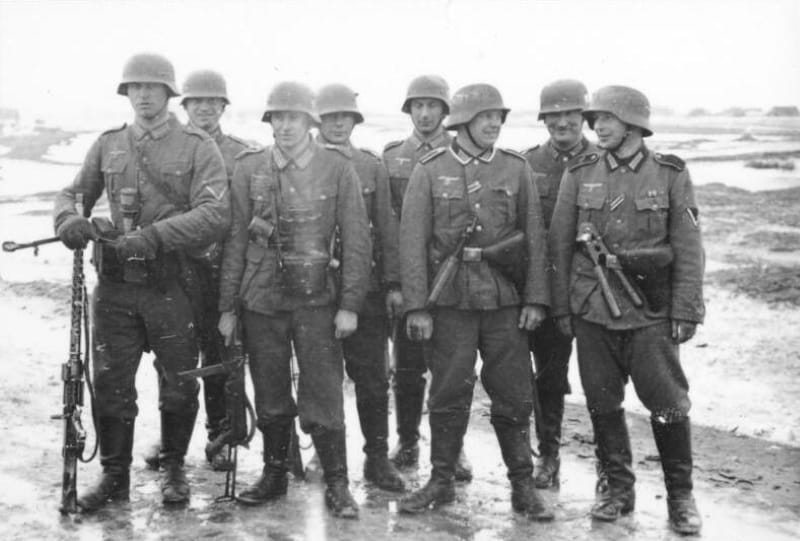I’ve always found the German weapons of WWII to be the most innovative and interesting. Despite being on the side of the bad guys, they are just intriguing. To say that Germany was a weapons pioneer is an understatement. Their MG-34 was the first General Purpose Machine Gun, which is one of the reasons I’ve always been attracted to it. If you’d like to learn some facts about Germany’s MG-34, tag along and we’ll delve into the subject.
1. MG-34 —The World’s First General Purpose Machine Gun
Germany’s first General Purpose Machine Gun (GPMG) was the MG-34. MG-34 stood for Maschinengewehr 34, or Machinegun 34, which was introduced in 1934 and officially issued beginning in 1936.

Not only was it Germany’s first GPMG, it was also the world’s first. Despite their evil intentions during WWII, you have to hand it to the Germans—their innovation was admirable.
2. MG-34 Particulars and Specs
Chambered in 7.92×57 Mauser, The MGl-34 used the same cartridge as Germany’s battle rifle, the Mauser 98. It weighed 26.7 pounds by itself and 70.5 pounds with the tripod. It was 48 inches in length.

The MG-34’s action was recoil operated with an opened, rotating bolt.
3. Variable Rate of Fire
Early versions of the MG-34 had a selectable rate of fire (located in a selector on the pistol grip) and were capable of firing either 600 or 1,000 rounds per minute. Later, the rate of fire was fixed at the rate of 800-900 rounds per minute. Other models, which were typically used on aircraft, had higher rates of fire, some 1,200 or even 1,500 rounds per minute.
4. Caution
Gunners were cautioned to only fire 150 rounds rapidly before changing out the barrel, lest they ruin the barrel by overheating it. Barrel changes took 10-15 seconds by a skilled crew.
5. Disadvantages
Although it was cutting edge for its time, the MG-34 was a complex weapon, which brought up two major issues that were against it.
- Its complexity made it unreliable because of close tolerances.
- If it became dirty, which was common during filthy combat conditions, it would suffer stoppages.
As well, that complex machining made it more difficult to produce. It was time-consuming and expensive. Being made from large pieces of steel, it was difficult to machine. Nevertheless, it was produced right up until the very end of the war.

6. Feeding
The MG-34 was fed by metallic ammunition belts, which came in either 50 or 250 rounds. These belts could also be loaded into a 50 or 75-round drum to make transporting the machine gun easier. The belts were non-disintegrating and could be reused again.


7. Select Fire
The trigger had two crescents; one permitted single shots to be fired and the other was fully automatic. The portion marked “E” was for semi-auto fire, and the portion marked “D” was for fully automatic fire.

8. Production
During WWII, over 350,000 MG-34s were produced. Had it not been so complex to machine and made use of so many high-quality alloys, more would have been made. The MG-42 outpaced the MG-34 in numbers because it made use of more stampings and was faster and easier to make.

9. Quick Change Barrel
The first to make use of a quick change barrel, the MG-34’s barrel needed to be changed after 150 rounds of rapid-fire or it would experience misfires. Spare barrels weighed 4.4 pounds each and had a service life of approximately 6,000 rounds, assuming they were not overheated.
10. Armored Vehicles
The MG-34 was used more extensively than the MG-42 inside armored vehicles because the 34’s barrel took less room to change inside the vehicle. The MG-42’s barrel was awkward to change in enclosed spaces because of the angle required for removal. The MG-34’s barrel could be removed and installed in line, therefore it was used inside armored vehicles.




11. It Wouldn’t Quit
Even after WWII, the MG-34 wouldn’t quit—it was used in a myriad of different wars, including by the Viet Cong in the Viet Nam War! It also saw action in the Suez, the Six Day War, the Angolan Civil War, the Cuban Revolution, the Troubles in Ireland, and others.
12. Infantry Squad
German infantry tactics dictated that the entire ten-man squad was focused to support the machinegun. It was the focus of their firepower. Aside from the machinegun crew, the other squad members were there to provide extra ammunition and protect the crew. The machine gun was the nucleus of the infantry squad.

13. Firing
Gunners were taught to fire short bursts and to change barrels every 150 rounds of fire rapidly to preserve barrel life. In emergencies, they were authorized to fire up to 400 rounds rapidly, but this decreased the life of the barrel.

14. Tripod
The tripod was best suited for defensive positions and had recoil-absorbing buffer springs in it. An optic could be mounted to enhance firing at extended distances out to 3,000 meters. The Lafette tripod weighed 44 pounds. The legs were adjustable so that the tripod could be at low, medium, and standing positions, and could be used in an anti-aircraft role.

There were several other tripods that were also used, including one that raised the gun very high for dedicated anti-aircraft use.


Certain optics and additions to the mount could be added for indirect fire, and the machine gun could be used more like artillery.

15. Norwegian Use
In the 1950s, Norway converted the MG-34 to .30-06 and then later to 7.62 NATO and used it into the 1990s.


